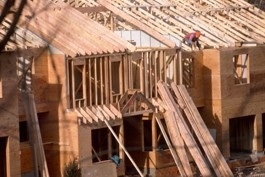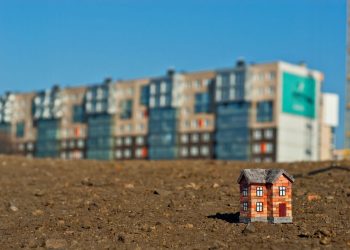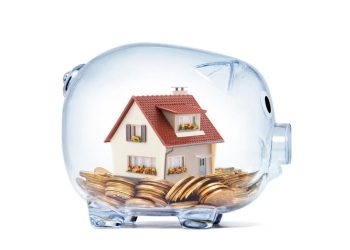 RISMEDIA, January 28, 2010—(MCT)—New-home buyers responded to the tough times in 2009 by opting for smaller houses, driving down the average size of a house built in the United States for the first time in 27 years.
RISMEDIA, January 28, 2010—(MCT)—New-home buyers responded to the tough times in 2009 by opting for smaller houses, driving down the average size of a house built in the United States for the first time in 27 years.
Data recently released by the National Association of Home Builders (NAHB) found the average size of a new home that was completed in 2009 fell to 2,480 square feet from 2,520 square feet in 2008. The last time the average completed-home size fell by a statistically significant amount was 1982.
“You’ve heard the mantra ‘downsize me’ and ‘small is the new big?’ Well, last year was definitely a downer,” said Carol Lavender, president of Lavender Design Group, a residential design firm in San Antonio, Texas.
Homeowners surveyed by Better Homes and Gardens magazine said downsizing was becoming a bigger priority: 36% said in November 2009 that they expected their next home to be “somewhat smaller” or “much smaller” than their current home versus 32% who said that in 2008. “Not surprisingly, we see a ‘cents and sensibility’ approach when it comes to buying or improving a home, with practicality and price being the top priorities,” said Eliot Nusbaum, the magazine’s executive editor of home design.
While the small-house movement in the United States has been gaining steam for a number of years, the recession has accelerated it and home builders have responded.
“The era of easy money is over. You really have to think before you go out and decide you need that five-bedroom, five-bath home,” said Rose Quint, the NAHB’s assistant vice president for survey research. “Couple that with the energy cost concerns of consumers today and I think we will continue this trend. Houses will not shrink drastically, but they will shrink.”
Although actual square footage of homes didn’t fall until 2009, the percent of homes with four or more bedrooms in them has been falling since 2007, NAHB data show. And in 2009, the number of homes with three or more bathrooms fell for the first time since 1992.
Two other trends in home construction are contributing to the declining square footages: The prominence of first-time buyers in the housing market and the increasing number of households with members 55 and older who are buying homes.
First-time buyers, driven into the market in good part by the availability of an $8,000 tax credit, are more likely to compromise on home size in exchange for a lower price. And the 55-plus crowd tends to purchase single-story homes, which generally are smaller because of the land costs that favor the more-efficient two-story plans.
“Barely over half of new homes today are built with two stories or more,” Quint said. Two-story homes peaked at about 55% of the market in 2006. For 2010, home builders say they will focus on lower-priced models and smaller homes. More than 95% of builders surveyed by NAHB in January said that was the way they saw their business evolving this year.
The penchant for smaller homes will necessitate some design changes. Builders, attempting to respond to those consumer demands as well as hold the line on prices, told the NAHB surveyors that they were most likely to include these features as standard in their houses this year:
-Walk-in closets in the master bedroom.
-Laundry rooms.
-Insulated front doors.
-Great rooms.
-Energy-efficient windows.
-Linen closets.
-Programmable thermostats.
-Energy-efficient appliances and lighting.
-Separate shower and tub in master bathrooms.
-Nine-foot ceilings on the first floor.
Among the things that builders said they were least likely to add to houses in 2010:
-Outdoor kitchens.
-Outdoor fireplaces.
-Sunrooms.
-Butler’s pantries.
-Media rooms.
-Desks in kitchens.
-Two-story foyers.
-Eight foot ceilings on the first floor.
-Multiple shower heads in the master bath.
-Smaller kitchens.
“You can see that builders are concentrating heavily on energy-saving features,” Quint said. “But a lot of the luxury items are on the chopping block or on hold as builders try to lower costs.”
(c) 2010, MarketWatch.com Inc.
Distributed by McClatchy-Tribune Information Services.










